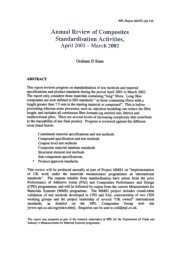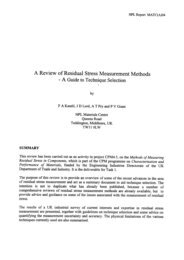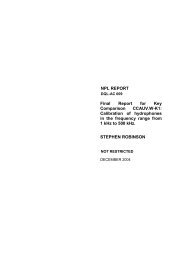Dimensional Measurement using Vision Systems - NPL Publications ...
Dimensional Measurement using Vision Systems - NPL Publications ...
Dimensional Measurement using Vision Systems - NPL Publications ...
Create successful ePaper yourself
Turn your PDF publications into a flip-book with our unique Google optimized e-Paper software.
<strong>Measurement</strong> Good Practice Guide No. 39<br />
5.4 DIGITAL CAMERAS<br />
A digital camera is ideal for dimensional measurement <strong>using</strong> vision systems. Its operation<br />
is completely different to an analogue camera, in that the analogue to digital (A/D)<br />
conversion of the image takes place within the camera. This has significant benefits, as all<br />
the unwelcome effects of analogue signal transmission such as noise, interference and line<br />
loss are removed. The main drawback to these cameras is that they are more expensive<br />
than analogue types. Digital cameras built before the Camera Link standard was adopted<br />
also suffer a second drawback, that is, the complex cabling required for their operation. In<br />
its simplest form, an analogue camera requires only one coaxial cable to send an image.<br />
The digital signal, however, is sent byte by byte, with additional signal lines reserved for<br />
synchronisation, pixel clock and handshaking. The result is a camera that requires a bulky,<br />
inflexible cable with multiple wires, which often has to be custom made, increasing the<br />
cost still further. The industry wide adoption of the Camera Link standard will signal the<br />
end of complex cabling and significantly reduce the cost of cables for digital cameras.<br />
5.5 LINESCAN CAMERAS<br />
The active area of this camera consists of a single row of pixels. Linescan cameras are<br />
mostly used for imaging large, or moving objects. Complete 2D images can be built up by<br />
physically scanning the object or camera, with the start controlled by a trigger pulse and<br />
the acquisition stopped after a pre-determined number of lines have been scanned. The<br />
processing of linescan images does not follow the same rules as those for area scan<br />
cameras therefore specific frame grabbers may be required.<br />
6 FRAME GRABBERS<br />
The frame grabber is the interface between the camera and the control PC. Its task is to<br />
assemble a digital image, which can be processed by the computer. There are many<br />
commercial frame grabbers available, but their basic operation is as follows:<br />
6.1 ANALOGUE FRAME GRABBERS<br />
If the video signal is analogue, then the frame grabber must digitise it, <strong>using</strong> an A/D<br />
converter, usually with 8-bit resolution. The sampling interval of the A/D converter,<br />
called the pixel clock, can be internally generated or transmitted by the camera. The<br />
digitised values are stored in the frame grabber’s memory area until a complete image is<br />
assembled. The following sections describe the two modes of operation of frame grabbers<br />
and how they are used with various camera types.<br />
45
















